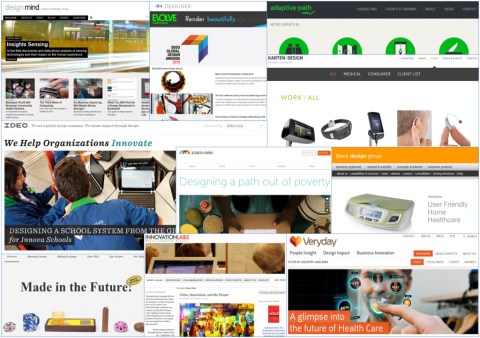Maybe because I was a Mechanical Engineer in a previous life I carry around a strong bias for good design (without debating what ‘good’ design is, I’ll just reference ‘Dieter Rams: ten principles for good design’ since it’s seemed to have stood the test of time). I’m always commenting to my wife about whether I think something is designed well or not. These comments were more frequent and probably annoying when my boys were smaller and I had to assemble toys for Christmas! It seems that everywhere I look these days there are articles on design, the rise of Design Executive Officers (or some other term combining ‘creative’, ‘design’, ‘executive’, …). Without realizing it, I’ve amassed a decent sized favorites folder of web sites related to design. I was recently reviewing the series of excellent blogs by John Westerveld (“Your supply chain is costing you money – …”), which got me to reflecting on my personal experiences and research to see if I could connect the dots between some of these costly shortfalls and the concept of ‘good’ design for the supply chain.
Vitsœ’s designer, Dieter Rams. Photograph by Abisag Tüllmann.[/caption] I started searching for the latest and greatest with respect to design for the supply chain. Not a lot popped to the surface. I was reading a blog on product design and supply chain where someone attended a forum in 2011 and claimed that in the previous 10 years there were only 36 articles in leading supply chain journals on the topic of product design and how it relates to the supply chain. I haven't been able to validate that, but Googling didn’t get too many results from the past few years. What I did see were papers, products, and services related to supply chain “X” design (“X” being network, enterprise, etc.). There was information on modeling, simulating and optimizing supply chains but not a lot on designing processes, products, services, data, etc. for the supply chain or supply chain management.
I’m encouraged when I see articles and activities related to sustainable supply chains because that’s a ‘good’ design principle and tackling sustainability while managing for profitability drives innovation and touches on a few other principles as well (e.g. the associated monitoring/verification for sustainability dictates attention to detail). I’m going to try and follow in John’s footsteps and over a series of blogs take a look at how/if Dieter Rams’ principles apply to design for the supply chain (and by extension supply chain management). My ultimate objective is to share my thoughts and gain insight from the community through conversation that might help with Supply Chain Design Thinking for Industry 4.0. Below are the principles I’ll be referencing and exploring. I’m looking forward to the conversation! Let me know if you have recent examples of ‘good’ design for the supply chain or have any general thoughts on the topic. Good design
- Is innovative
- Makes a product
- Is aesthetic
- Makes a product understandable
- Is unobtrusive
- Is honest
- Is long-lasting
- Is thorough down to the last detail
- Is environmentally friendly
- Is as little design as possible






Discussions
Then I left some comments on designer blogs, how 'UX/UI best practices' that they are raving about is something that people like me have been doing for decades and there's lots of research and knowledge about it around, but there wasn't much response also.
Design as we do it now was not needed in the past. Maybe it wasn't possible also, but I'm more in favor that it wasn't needed. The need in SCM for good design came from increasing complexity. We still have no idea how to manage complex processes, and they are getting more complex every day. We need design thinking and newly designed processes and technology to cope.
Thank you for writing about this and I'm looking forward to reading this series!
First and foremost, I think you should change your LinkedIn CV. I believe that more and more 'our industry' understands the significance of design. I also believe that folk with UX/UI experience are uniquely positioned to guide the direction of end-to-end processes because you really take an end-user view of the world and therefore consider aspects of the final solution that others don't. I'm a big fan of IDEO and "Human Centered Design" and I really believe that the biggest impacts on the supply chain of the future will be "elegant" solutions that consider environment, end-user, efficiency, etc.
Thanx for the stimulating perspective. I look forward to your input/feedback on future
I'm not sure I follow your comment. Can you expand the perspective you are sharing? I really want to make sure and get as much learning out of this conversation as possible.
Thanx!